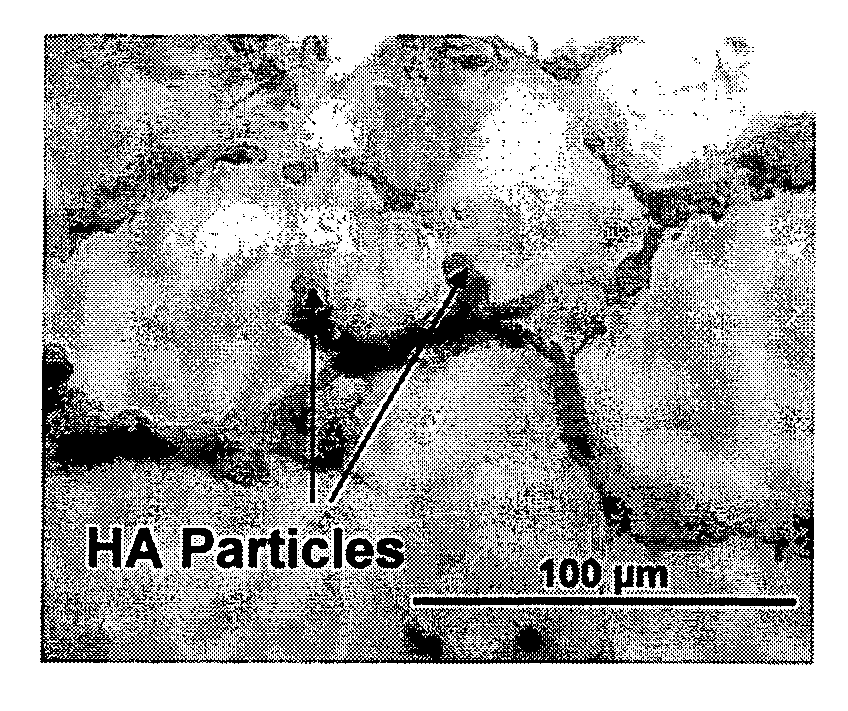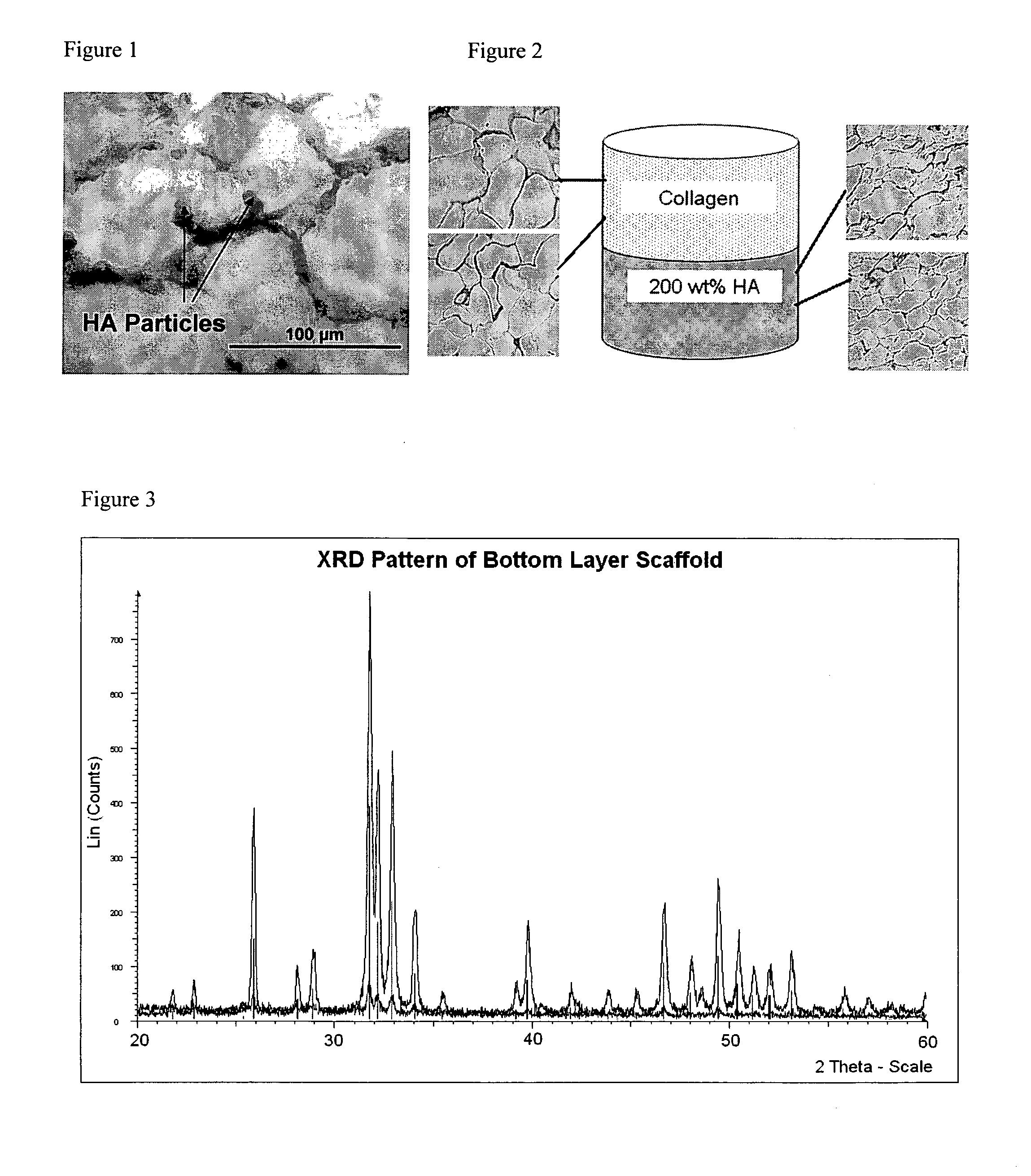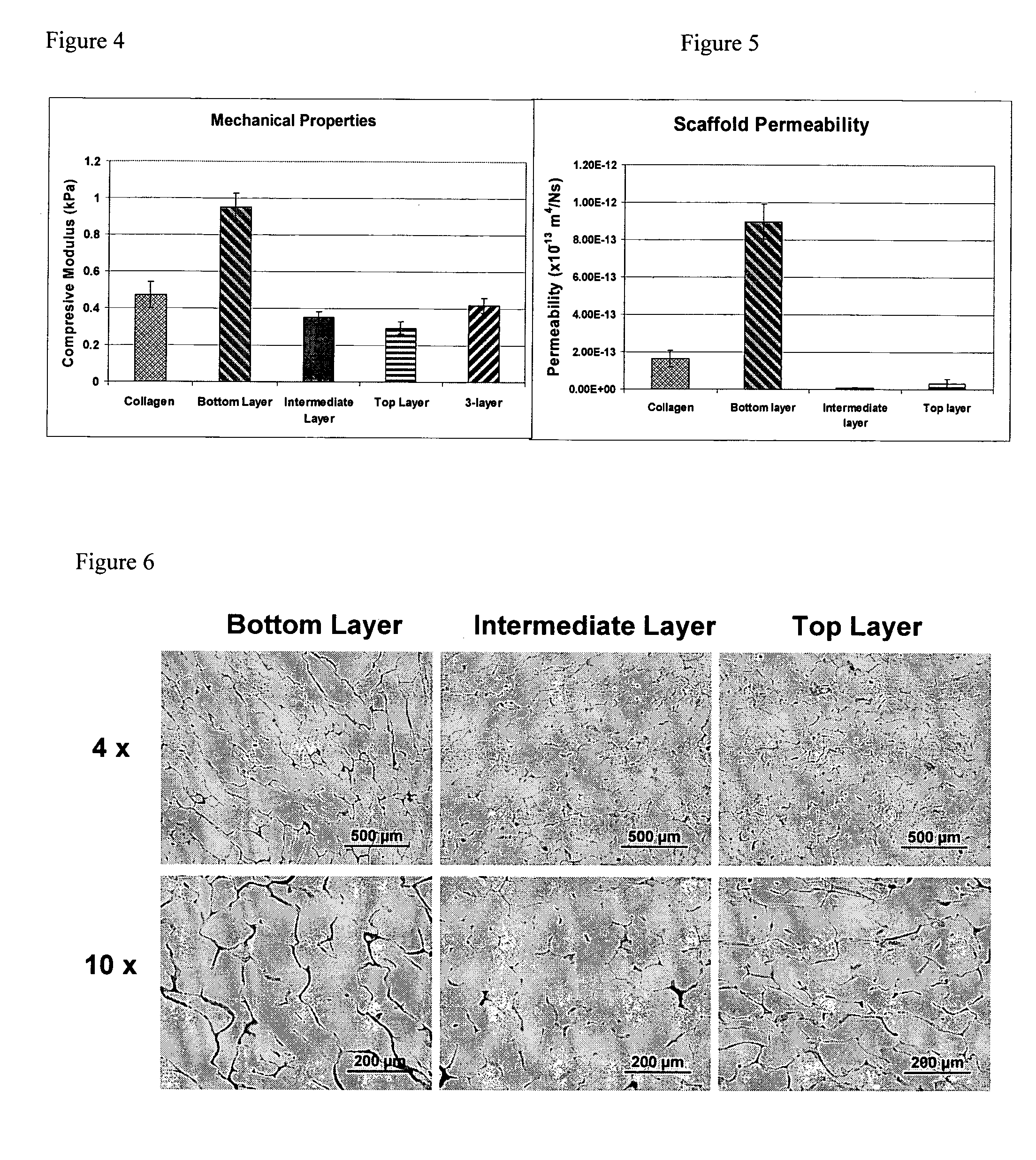Layered Scaffold Suitable for Osteochondral Repair
a collagen scaffold and osteochondral technology, applied in the direction of prosthesis, skeletal/connective tissue cells, drug compositions, etc., can solve the problems of discontinuous pore architecture, large voids at the interface between layers, and inability to independently control or vary the pore architecture of each layer, etc., to achieve optimal composition, pore architecture, porosity and mechanical properties, and high degree of cellular infiltration
- Summary
- Abstract
- Description
- Claims
- Application Information
AI Technical Summary
Benefits of technology
Problems solved by technology
Method used
Image
Examples
example 1
[0099]Embodiment 1 relates to the production of a two layer scaffold using the ‘iterative freeze-drying’ technique. The invention consists of a base bone layer composed of type I collagen and preferably 200 wt % hydroxyapatite, but this can range from 0 wt % HA up to 500 wt % HA. The top cartilage layer is composed of type I and type II collagen. The ratio of type I collagen to type II collagen can be from 0:1 to 1:0.
[0100]The preferred 200 wt % collagen / HA (CHA) slurry for the bone layer of the scaffold is prepared as follows: 240 ml of preferably 0.5 M acetic acid (this can range from 0.05M to 10M) was prepared by adding 6.9 ml glacial acetic acid to 233.1 ml of distilled deionised water. 1.2 g of microfibrillar bovine tendon collagen (Collagen Matrix Inc., NJ, USA) was placed into a beaker and 100 ml of 0.5 M acetic acid solution was added. The beaker was refrigerated at 4° C. overnight to allow the collagen to swell and thus blend more easily. A WK1250 water cooling system (Laud...
example 2
[0108]Embodiment 2 relates to a three layer scaffold, the base layer of the scaffold has similar structural and compositional properties to the subchondral bone layer and consists of the primary constituents of bone; type I collagen (the organic phase) and hydroxyapatite (the mineral phase). The intermediate layer has a similar composition to calcified cartilage and consists of type II collagen which is present in cartilage and also type I collagen and hydroxyapatite (present in bone). The top layer, modelled on the superficial to the deep zones of articular cartilage, comprises type I and type II collagen.
[0109]Bone Layer:
[0110]The bone layer consisted of a CHA scaffold, with the amount of HA present varying between 0 wt % and 500 wt %. The CHA slurry was fabricated and freeze-dried as described in embodiment 1 above.
[0111]Intermediate Layer:
[0112]The intermediate layer consisted of type I collagen (Col1) (Collagen Matrix Inc., N.J., USA), type II collagen (Col2) (Porcine type II c...
example 3
[0121]In another example, a 3-layered scaffold is produced where the base layer is crosslinked via a chemical cross-linking method described earlier (EDAC) prior to addition of the 2nd layer in order to improve mechanical stiffness of the scaffold and maintain a equiaxed pore structure when additional layers are added to the scaffold. The degree of cross-linking used can be controlled based on the structural requirements.
PUM
| Property | Measurement | Unit |
|---|---|---|
| Pore size | aaaaa | aaaaa |
| Ratio | aaaaa | aaaaa |
| Dimensionless property | aaaaa | aaaaa |
Abstract
Description
Claims
Application Information
 Login to View More
Login to View More - R&D
- Intellectual Property
- Life Sciences
- Materials
- Tech Scout
- Unparalleled Data Quality
- Higher Quality Content
- 60% Fewer Hallucinations
Browse by: Latest US Patents, China's latest patents, Technical Efficacy Thesaurus, Application Domain, Technology Topic, Popular Technical Reports.
© 2025 PatSnap. All rights reserved.Legal|Privacy policy|Modern Slavery Act Transparency Statement|Sitemap|About US| Contact US: help@patsnap.com



